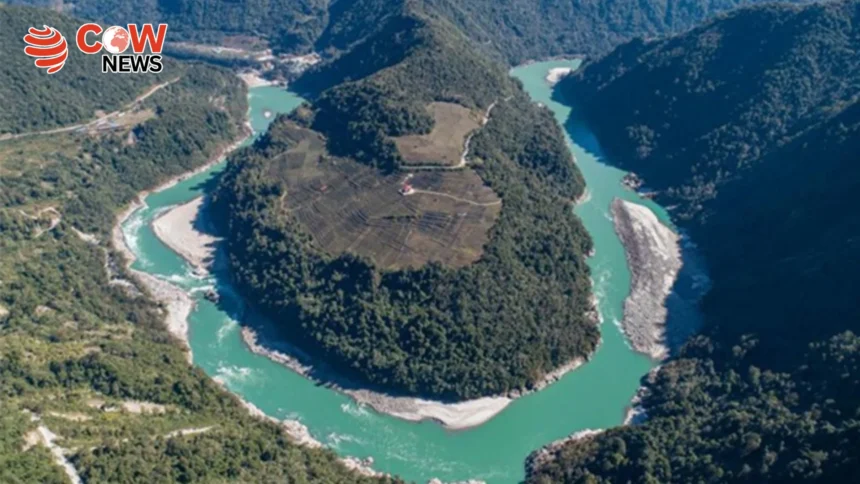Beijing( The COW News Digital)China has officially commenced construction of a massive hydroelectric dam on the Yarlung Tsangpo River in Tibet, triggering concern and unease in neighboring India due to its downstream dependency on the river’s flow. The project, viewed as China’s most ambitious water initiative yet, carries both energy and geopolitical implications for the region.
Chinese Premier Li Qiang laid the foundation for the Yarlung Tsangpo Mega Dam, a colossal structure with an estimated investment of $168 billion. Designed to generate over 300 billion kilowatt-hours of electricity annually, the dam will surpass China’s own Three Gorges Dam by more than three times in output. Once completed, it will be the largest hydroelectric facility in the world.
The dam’s strategic significance extends far beyond power generation. Located in the upper reaches of the Brahmaputra River — which flows into India’s Arunachal Pradesh and Assam states before reaching Bangladesh — the project gives China a powerful position over regional water flow. Environmentalists and analysts warn of severe downstream consequences, including potential water shortages, ecological disruption, and forced migration in India and Bangladesh.
India, which has recently floated threats to suspend the Indus Waters Treaty with Pakistan, now faces a situation where its own water security could be compromised. The prospect of China controlling water flow during a conflict, by either withholding water or releasing massive floods, has raised alarms in New Delhi. Experts describe the dam’s potential weaponization as a “water bomb” scenario due to the extreme height and force of water from Tibet’s mountainous terrain.
China, however, maintains that the project is purely for peaceful energy development. According to official statements, extensive scientific and environmental studies were conducted before the project’s approval in December 2024. Electricity generated will power AI infrastructure, crypto mining, and residential consumption across China, including power transmission lines to provinces as far as Hong Kong.
A new state-backed enterprise, Yajiang Company, has been established to oversee construction and operation of the facility. Chinese officials insist there is no plan to weaponize water or disturb ecological balance in neighboring countries, but regional observers remain wary.
As climate change accelerates resource competition, China’s water infrastructure expansion — especially in geopolitically sensitive areas — is likely to remain a flashpoint in regional diplomacy.






